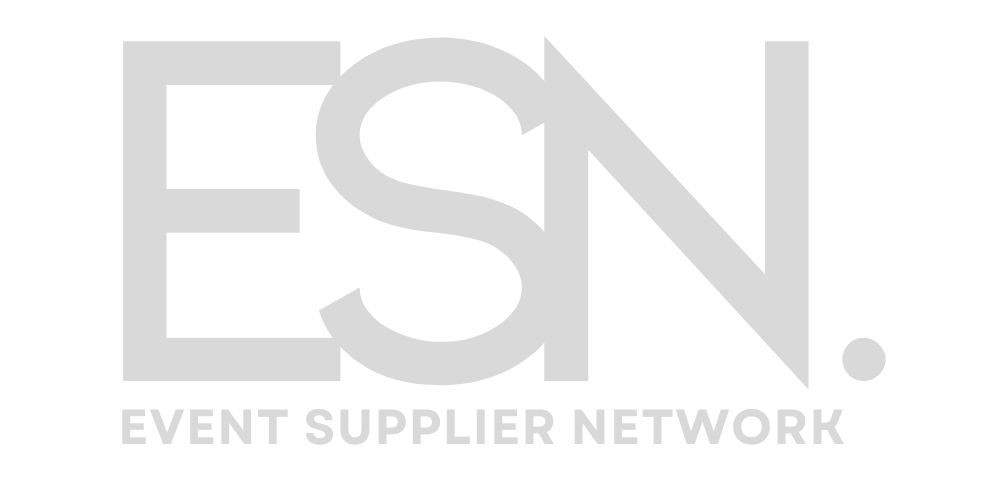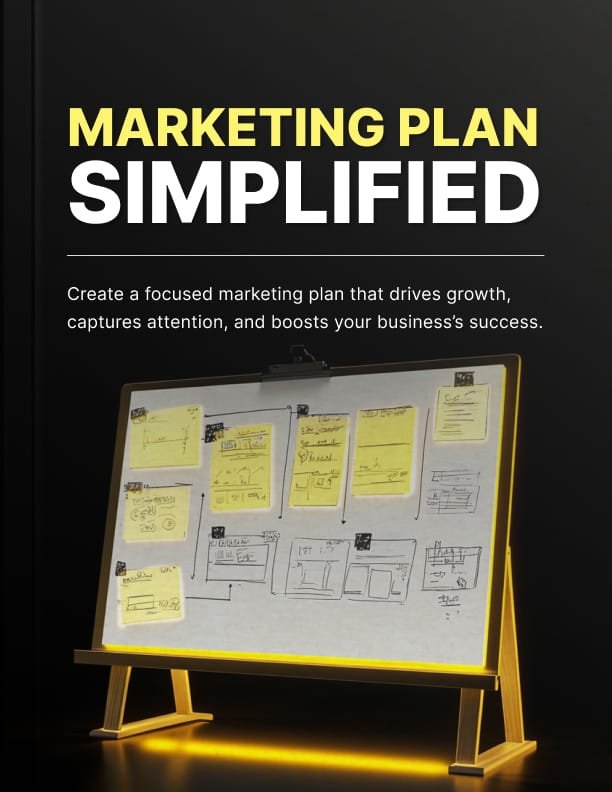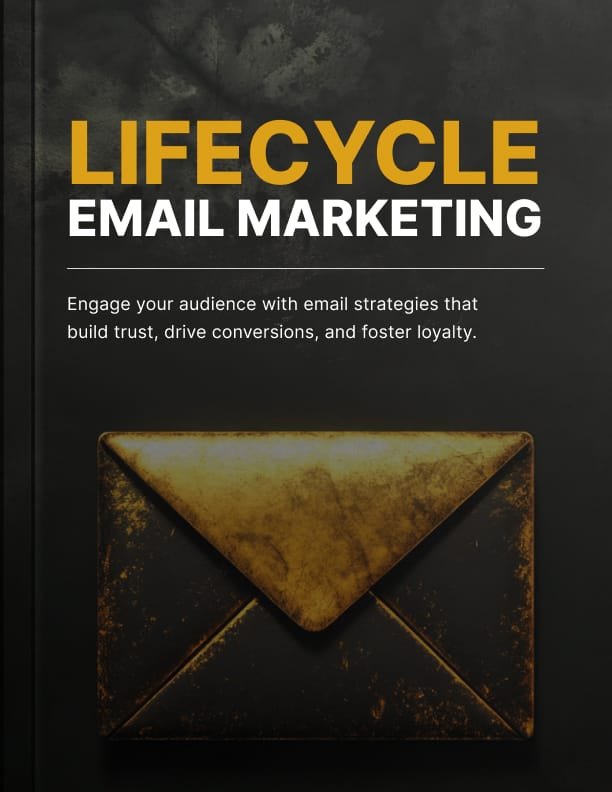INTRODUCTION
Your online reputation plays a critical role in your business’s success. This course is designed to guide you through the constantly shifting world of digital public relations with focus and intention. It offers practical strategies to help you build an authentic, engaging, and lasting online presence that distinguishes your brand in a competitive market.
| It’s time to take control of your online narrative and transform how the world sees your brand. |
Digital PR holds immense potential for transforming your brand. Imagine captivating your audience with a voice that feels personal and relatable. Picture managing your social media presence with ease, engaging followers who amplify your message, and confidently addressing challenges to turn potential setbacks into moments of trust-building. These outcomes are within your reach.
This book provides actionable insights into crafting compelling messages that resonate deeply, building a loyal online following, and mastering the art of crisis management. It goes beyond theory, offering practical strategies and real-world examples to help you implement these techniques right away. You’ll learn how to leverage data-driven insights, apply advanced engagement tactics, and adapt to the latest trends in digital communication.
As you explore this course, you’ll uncover the tools to elevate your brand’s online presence, build trust, and drive meaningful growth. Whether you’re a small business owner eager to expand your reach or a marketing professional looking to refine your skills, this book will empower you to create a strong, lasting digital reputation. By the end, you’ll be equipped with the knowledge and confidence to craft a digital presence that becomes a true asset for your business. It’s time to take control of your online narrative and transform how the world sees your brand. Let’s begin building a digital PR strategy that inspires trust, drives engagement, and unlocks new opportunities for success.
ESTABLISHING YOUR AUTHENTIC BRAND VOICE
Your brand voice is the heartbeat of your business. It’s the unique personality that sets you apart from competitors and resonates with your target audience. In today’s crowded marketplace, a distinctive and authentic brand voice is more crucial than ever. It’s not just about what you say, but how you say it.
Identifying Your Core Values and Attributes
The foundation of your brand voice lies in your core values and attributes. These are the principles and characteristics that define your business and guide your decisions. To uncover these, ask yourself what your business stands for, what your non-negotiable principles are, how you want customers to perceive your brand, and what makes your approach unique in your industry. Take some time to brainstorm and list out your answers. Don’t rush this process – it’s crucial to be honest and thorough. Your core values and attributes will serve as the compass for your brand voice, ensuring consistency across all your communications.
For example, if one of your core values is innovation, your brand voice might be forward-thinking and tech-savvy. If you prioritize sustainability, your voice could be eco-conscious and socially responsible.
| Core Value | Brand Voice Characteristic |
| Innovation | Forward-thinking, Tech-savvy |
| Sustainability | Eco-conscious, Socially responsible |
| Luxury | Refined, Sophisticated |
| Affordability | Practical, Value-oriented |
Translating Values into Voice
Now that you’ve identified your core values and attributes, it’s time to translate them into a tangible brand voice. This involves developing a specific tone, style, and vocabulary that align with your brand’s personality. Consider elements such as:
- Tone
Serious or playful, formal or casual, authoritative or friendly.
- Style
Short and punchy sentences or longer, more descriptive ones.
- Vocabulary
Specific words or phrases that align with your brand.
For instance, if your brand is youthful and energetic, you might adopt a casual tone, use pop culture references, and incorporate trendy slang (when appropriate). On the other hand, if you’re positioning yourself as a luxury brand, your tone might be more refined and elegant, with sophisticated vocabulary and longer, more elaborate sentences.
Your brand voice should be consistent across all platforms and communications. Whether it’s a tweet, a blog post, or an email newsletter, your audience should recognize your unique voice.
Standing Out from the Crowd
Amid a sea of similar businesses, your brand voice serves as your unique advantage. It’s what makes you memorable and builds emotional connections with your audience. To truly stand out, you need to go beyond just identifying your voice. You need to amplify what makes it unique. Some strategies to distinguish your brand voice include being bold and taking a stand on issues relevant to your industry, sharing the journey of your business including its challenges and triumphs, using humor if it fits your brand personality, creating a unique lexicon of brand-specific terms or phrases, and ensuring consistency across all touchpoints.
Consider the case of Dollar Shave Club, which revolutionized the razor industry not just with their product, but with their distinctive brand voice. Their irreverent humor and casual tone struck a chord with millennials tired of overpriced, over-hyped razors. Their launch video, which went viral, perfectly encapsulated their brand voice with lines like “Our blades are f***ing great” and “Are the blades any good? No. Our blades are great.” This bold, humorous approach set them apart from the serious, technology-focused messaging of established brands like Gillette. By 2016, Dollar Shave Club had captured 15% of the U.S. razor cartridge market share, demonstrating the power of a well-crafted brand voice.
Refining Your Brand Messaging
Once you’ve established the basics of your brand voice, it’s time to refine your messaging to ensure it’s both compelling and trustworthy. This involves crafting messages that not only sound like your brand but also resonate with your target audience and achieve your business goals. Key steps to refine your brand messaging include knowing your audience, focusing on benefits rather than just features, using power words that evoke emotion and drive action, being concise, incorporating storytelling, and including clear calls-to-action.
Understanding your audience is crucial. What are their pain points, desires, and values? Your brand voice should speak directly to these aspects. Instead of just listing what your product or service does, explain how it improves your customers’ lives. Incorporate words that evoke emotion and drive action. Words like “exclusive,” “guaranteed,” or “revolutionary” can add impact to your messaging. In today’s fast-paced world, attention spans are short, so get your message across quickly and clearly. Weave narratives into your messaging, as stories are memorable and can create emotional connections with your audience. Finally, every piece of communication should guide your audience towards a specific action.
Implementing Your Brand Voice
Now that you’ve defined and refined your brand voice, it’s time to implement it across all your digital platforms. This ensures a consistent experience for your audience, regardless of where they encounter your brand.
Create a Brand Voice Guide that documents your brand voice characteristics, including do’s and don’ts, example phrases, and tone guidelines. Share this with everyone who communicates on behalf of your brand. Train your team to ensure all members understand and can implement your brand voice, from customer service representatives to social media managers. Audit your existing content, reviewing your website, social media profiles, and marketing materials. Update any content that doesn’t align with your newly defined brand voice.
While your core brand voice should remain consistent, you may need to adjust slightly for different platforms. For example, your tone on LinkedIn might be slightly more professional than on Instagram. Regularly review how your brand voice is being received by your audience and be open to making adjustments based on feedback and results.
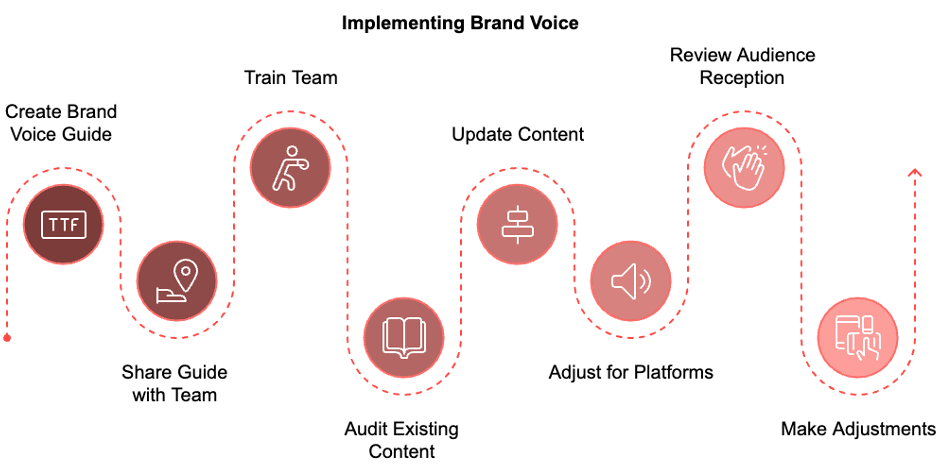
Establishing your authentic brand voice is not a one-time task. It requires consistent attention and refinement. As your business evolves, your brand voice may need to adapt while staying true to its core values. Maintaining consistency helps build a strong and recognizable brand that resonates with your audience and stands out in the marketplace.
Your brand voice is more than just words on a page or screen. It represents the personality of your business, the first impression you make on potential customers, and the lasting impression you leave with loyal ones. Taking the time to nurture and refine this voice is a valuable investment in the long-term success of your business.
SOCIAL MEDIA MASTERY
Social media is now a crucial tool for businesses to connect with their audience, build brand awareness, and drive growth. However, simply having a presence on social platforms isn’t enough. To truly harness the power of social media, you need to master the art of engagement.
The Importance of Social Media Engagement
Social media engagement goes beyond merely posting content. It’s about creating meaningful interactions with your audience, fostering a sense of community, and building lasting relationships. When you engage effectively, you’re not just talking to your audience, but conversing with them. This two-way communication builds trust, loyalty, and brand advocacy. According to a 2023 study by Sprout Social, 57% of consumers will increase their spending with a brand they feel connected to, highlighting the direct impact of engagement on your bottom line. Moreover, engaged followers are more likely to share your content, amplifying your reach and potentially attracting new customers.
Crafting Compelling Content
The foundation of successful social media engagement is compelling content. Your posts should be informative, entertaining, or valuable to your audience.
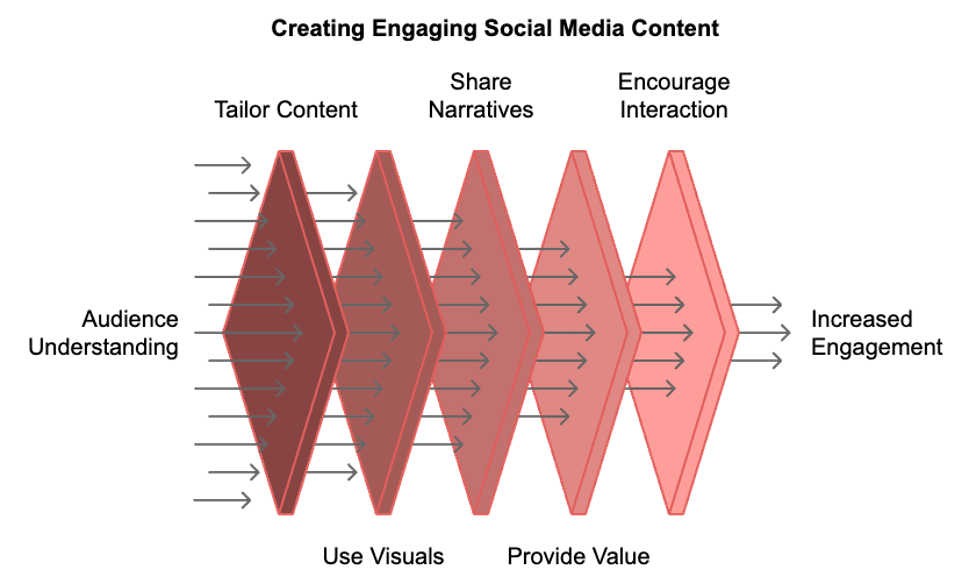
Understanding your target demographic is crucial. What are their interests, pain points, and preferences? Use this information to tailor your content. Posts with images or videos typically receive higher engagement. In fact, tweets with images receive 150% more retweets than those without, according to Twitter’s own data. Humans are wired to respond to narratives. Share customer success stories, behind-the-scenes glimpses, or your company’s journey to create emotional connections. Encourage interaction by posing questions to your audience. This could be as simple as asking for opinions on a new product or running polls on current industry trends. Share tips, how-to guides, or industry insights that your audience will find useful. This positions you as a helpful resource, not just a business pushing products. Tap into trending topics or current events that are relevant to your industry. This shows that your brand is up-to-date and in touch with your audience’s interests.
Content Creation and Scheduling
Consistency is key in social media engagement. Your audience should know when to expect new content from you. Create a content calendar that outlines what you’ll post, when, and on which platforms. This helps you maintain a balanced mix of content types and ensures you’re covering all important topics or events. Set aside time to create multiple pieces of content at once. This is more efficient than trying to come up with posts on the fly. Don’t reinvent the wheel for every post. A blog post can be turned into multiple social media updates, an infographic, or a video. Tools like Hootsuite, Buffer, or Sprout Social allow you to schedule posts in advance, ensuring consistent posting even when you’re busy. Use platform analytics to determine when your audience is most active and schedule your posts accordingly.
Audience Segmentation and Personalized Interactions
Not all followers are the same, and they shouldn’t be treated as such. Audience segmentation allows you to tailor your content and interactions to specific groups within your larger audience. Divide your audience based on demographics, interests, behavior, or engagement level. Create content that speaks directly to each segment’s interests or needs. Use platform advertising tools to deliver highly targeted content to specific segments. When interacting with followers, consider their segment and tailor your response accordingly. Offer special content or promotions to different segments to make them feel valued.
| Segment | Characteristics | Engagement Strategy |
| Young Professionals | Age 25-35, career-focused | Career tips, industry trends |
| Parents | Age 30-45, family-oriented | Family-friendly content, parenting advice |
| Seniors | Age 60+, retirement-focused | Health tips, leisure activities |
| Students | Age 18-24, education-focused | Study hacks, career guidance |
Leveraging User-Generated Content
User-generated content (UGC) is a powerful tool for engagement. It not only provides you with fresh content but also makes your audience feel valued and involved with your brand. Run contests or campaigns that encourage followers to create and share content related to your brand. Regularly feature user-generated content on your platforms. This could be customer photos, reviews, or testimonials. Always respond to and engage with UGC, even if you’re not featuring it. This encourages more followers to participate. Always ask for permission before using someone’s content, and give credit when you do. Encourage followers to use a specific hashtag when posting about your brand. This makes it easier to find and showcase UGC.
Utilizing Analytics Tools and Adapting Strategies
To truly master social media engagement, you need to measure your success and adapt your strategies accordingly. Analytics tools provide valuable insights into your performance. Each social media platform offers its own analytics tools. Familiarize yourself with these to understand platform-specific metrics. Tools like Google Analytics can provide a more detailed view of how social media drives traffic to your website. Focus on metrics that align with your goals. These might include engagement rate, reach, click-through rate, or conversions. Set up a system for regular reporting and analysis. This could be weekly quick checks and more in-depth monthly reviews.
Use analytics to conduct A/B tests on different types of content, posting times, or engagement strategies. The true power of analytics lies in using the data to refine and improve your strategies. Analyze which posts get the most engagement and try to understand why. Replicate these elements in future content. Use data to determine when your audience is most active and adjust your posting schedule accordingly. If certain types of posts or tones consistently perform well, consider adjusting your overall brand voice to align more closely with what resonates with your audience. Use data to determine which platforms are most effective for your brand and focus your efforts there. Use insights about your audience’s preferences to create more targeted, personalized content.
Building a Vibrant, Interactive Community
The ultimate goal of social media engagement is to build a community around your brand. Make it a priority to respond to comments, messages, and mentions in a timely manner. Pose thought-provoking questions or start discussions related to your industry or brand. Regularly feature members of your community, whether it’s customers, partners, or employees. Host live Q&A sessions, product demonstrations, or behind-the-scenes tours to give your audience real-time interaction opportunities. Consider creating private Facebook groups or other exclusive communities for your most engaged followers. Involve your community in content creation. This could be through polls to decide on new product features or crowdsourcing ideas for upcoming content.
Even with the best strategies, you may face challenges in your social media engagement efforts. If your posts aren’t getting much interaction, revisit your content strategy. Are you providing value? Are you posting at the right times? Consider surveying your audience to understand what they want to see. Don’t ignore or delete negative feedback (unless it’s spam or abusive). Instead, respond professionally and try to resolve issues publicly. This shows that you value customer feedback and are committed to improvement. Social media platforms frequently update their algorithms, which can affect your reach. Stay informed about these changes and be prepared to adapt your strategy. If you’re running out of ideas, look to your analytics for inspiration. What has worked well in the past? Also, don’t be afraid to repurpose old content in new ways. If you’re struggling to maintain consistent engagement due to limited resources, consider using tools to automate some aspects of your social media management, allowing you to focus on high-value interactions. Social media mastery is an ongoing process that requires continuous learning and adaptation. Implementing these best practices will help you create a vibrant, engaged community around your brand, fostering stronger connections and long-term loyalty. The key is to be authentic, provide value, and truly listen to your audience. With time and effort, you’ll see your social media presence transform from a mere marketing channel into a powerful tool for building lasting relationships with your customers.
PROACTIVE AND STRATEGIC AUDIENCE ENGAGEMENT
Your audience interacts across multiple platforms, each with its unique culture and expectations. To build meaningful connections, it’s essential to develop strategic engagement tailored to these diverse channels.
Understanding Platform Diversity
Before you start engaging, it’s crucial to understand the nuances of each platform. Every digital channel has its own personality, user base, and unwritten rules. What works on Instagram might fall flat on LinkedIn. LinkedIn is primarily for professional networking and B2B communication, while Facebook caters to a broad audience and focuses on community building. Instagram thrives on visual content and lifestyle branding, whereas Twitter excels in real-time updates and concise messaging. TikTok has become the go-to platform for short-form video and trending content, while YouTube remains the king of long-form video and educational content. Reddit is home to niche communities and in-depth discussions, and Pinterest specializes in visual discovery, DIY, and lifestyle content.
Your job is to understand these platforms and tailor your approach accordingly. For instance, on LinkedIn, you might share industry insights and professional achievements. On Instagram, you could showcase your product in action or give behind-the-scenes glimpses of your company culture. The key is to adapt your message while maintaining your core brand identity across all platforms.
Creating Platform-Appropriate Content
Now that you understand the differences between platforms, it’s time to create content that fits each one perfectly.
Adapting your message is crucial; while your core message should remain consistent, the way you present it should change. On Twitter, you might distill your message into a punchy one-liner, while on YouTube, you could explore the same idea in a detailed video. It’s essential to use platform-specific features to your advantage. Instagram Stories are perfect for time-sensitive content, Twitter polls can gather quick audience feedback, and LinkedIn articles allow for in-depth industry analysis.
Minding your format is equally important. Some platforms favor square images, others prefer vertical videos. Ensure your content is optimized for each platform’s preferred format. Adjusting your tone is another key aspect of creating platform-appropriate content. Your brand voice should remain consistent, but you can adjust the tone to be more professional on LinkedIn, more casual on Twitter, and more visual on Instagram. Timing matters too; each platform has peak engagement times. Use analytics tools to find out when your audience is most active on each platform and schedule your posts accordingly.
Creating platform-appropriate content doesn’t mean starting from scratch for each platform. You can repurpose content across platforms by adapting it to fit each one’s unique requirements. This approach allows you to maintain consistency in your message while maximizing your reach and engagement across different channels.
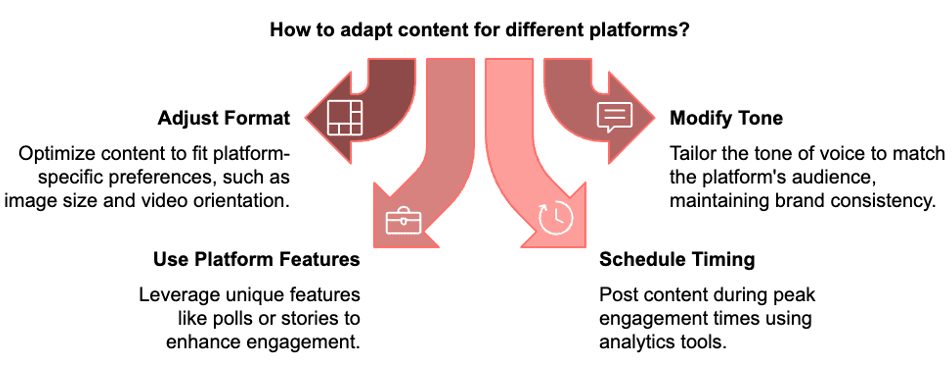
Building a Unified Brand Presence
While adapting to each platform is important, maintaining a cohesive brand image across all channels is equally crucial. Your audience should be able to recognize your brand whether they’re on your website, scrolling through Instagram, or reading your tweets. Visual consistency is key. Use consistent colors, fonts, and imagery across all platforms. Your profile pictures and cover images should be similar, if not identical, across channels. Voice consistency is equally important. While your tone may vary slightly, your overall brand voice should remain consistent. If you’re humorous on Instagram, don’t suddenly become overly formal on Twitter.
Message consistency is crucial for building a unified brand presence. Your core brand message and values should shine through regardless of the platform. Whether you’re creating a TikTok video or writing a LinkedIn article, your brand’s essence should be clear. Cross-platform storytelling can be a powerful tool for maintaining consistency while leveraging the strengths of each platform. Create narratives that span multiple platforms. For example, you could start a story on Instagram, continue it on Twitter, and conclude it on your blog. This approach not only maintains consistency but also encourages your audience to engage with your brand across multiple platforms.
Integrated campaigns are another effective way to build a unified brand presence. When running marketing campaigns, ensure they’re integrated across all your platforms for maximum impact. This approach allows you to create a cohesive brand experience that resonates with your audience regardless of where they encounter your brand.
Listening and Responding Effectively
Engagement isn’t just about broadcasting your message; it’s about listening and responding to your audience. Effective listening and responding can significantly enhance your brand’s reputation and build stronger relationships with your audience. Here’s a complete approach to listening and responding effectively across platforms:
- Monitor mentions diligently using social listening tools to track mentions of your brand across platforms, even when you’re not directly tagged. This allows you to stay on top of conversations about your brand and respond promptly.
- Aim to respond to comments, messages, and mentions within 24 hours, if not sooner. Quick responses show that you value your audience’s input and are committed to engaging with them.
- When someone raises a concern or complaint, address it publicly (unless it involves sensitive information). This shows transparency and can turn a negative situation into a positive brand interaction.
- Actively seek feedback from your audience and acknowledge it when received. This could be as simple as saying “Thanks for your input!” or as elaborate as implementing suggested changes and crediting the user who suggested them.
- To ensure consistency in your interactions, develop a guide for your team on how to respond to various types of comments or messages. This guide should cover tone, common scenarios, and escalation procedures for complex issues.
Following these strategies helps you create a responsive and engaging presence across all your platforms, strengthening connections with your audience and enhancing your brand reputation.
Leveraging User-Generated Content
User-generated content (UGC) is a powerful tool for engagement. It not only provides you with fresh content but also makes your audience feel valued and involved. To leverage UGC effectively, start by encouraging creation. Run contests or campaigns that inspire your audience to create content related to your brand. This could be anything from photos of them using your product to creative interpretations of your brand message. Once you have this content, showcase it regularly on your platforms. This could include customer photos, reviews, or testimonials. Always give credit when sharing UGC. This not only acknowledges the creator but also encourages more people to create content for your brand.
Even if you’re not featuring a piece of UGC, engage with it. Like, comment, or share to show appreciation. This engagement can encourage more UGC creation and foster a sense of community around your brand. Creating a branded hashtag can be an effective way to organize and find UGC. Encourage your audience to use a specific hashtag when posting about your brand. This makes it easier to find and showcase UGC, and it can also create a sense of community among your followers.
| Platform | UGC Strategy | Example |
| Photo contests | #BrandNameChallenge | |
| Retweet campaigns | “Share your experience with our product!” | |
| Customer story features | Weekly “Customer Spotlight” posts | |
| TikTok | Dance or challenge videos | #BrandNameDanceOff |
| YouTube | Video testimonials | “My Brand Name Story” series |
Effectively leveraging UGC helps you build a more engaging and authentic brand presence across platforms, fostering a stronger connection with your audience.
CRISIS MANAGEMENT AND REPUTATION PROTECTION
Your brand’s reputation can change quickly, so it’s important to take care of it and keep it strong. A single tweet, review, or viral post can significantly impact how the public perceives your business. This reality makes crisis management and reputation protection essential skills for any business owner or marketer.
Understanding the Digital Reputation Landscape
Your online reputation is the collective perception of your brand based on its digital footprint. This includes everything from customer reviews and social media interactions to news articles and blog posts. Today, information travels fast, and negative content can quickly outweigh years of positive brand efforts.
| According to a 2023 study by the Edelman Trust Barometer, 63% of consumers trust what they read about a brand online more than what the brand says about itself. |
This statistic underscores the importance of managing your online reputation proactively. The best way to handle a crisis is to prevent it from happening in the first place.
Proactive reputation management involves actively shaping your brand’s online presence and addressing potential issues before they escalate. Start by conducting a thorough audit of your current online presence. Search for your brand name and related keywords across various platforms. Take note of what appears on the first few pages of search results, as these are what most people will see. Pay attention to both positive and negative mentions. Once you have a clear picture of your online reputation, develop a strategy to enhance it. This might include creating high-quality, SEO-optimized content that showcases your brand’s strengths and values, encouraging satisfied customers to leave positive reviews on relevant platforms, engaging actively on social media to build a positive brand image, addressing negative feedback promptly and professionally, and monitoring mentions of your brand across the web using tools like Google Alerts or more sophisticated social listening platforms.
Developing a Crisis Communication Plan
Despite your best efforts at prevention, crises can still occur. Having a well-thought-out crisis communication plan can mean the difference between a minor hiccup and a major reputation disaster. Your crisis communication plan should include a clear chain of command, pre-approved messaging templates, a list of key stakeholders, designated spokespersons, social media guidelines, a monitoring system, and an escalation protocol.
The goal of your crisis communication plan is to enable quick, consistent, and effective responses when issues arise. Negative feedback is inevitable for any business. How you respond to it can significantly impact your reputation. Here are some best practices for handling negative feedback:
- Respond Promptly
- Stay Calm and Professional
- Acknowledge the Issue
- Take the Conversation Offline
- Follow Up
- Learn from Feedback
Here’s an example of how to respond to a negative review:
“Thank you for your feedback, [Customer Name]. We’re sorry to hear about your experience with [specific issue]. At [Your Company], we strive to provide excellent service to all our customers. We’d like to learn more about your situation and make things right. Please contact us at [email/phone] so we can address your concerns directly.”
Managing Misinformation and Leveraging Digital Tools
As social media continues to grow, misinformation can spread quickly and harm your brand’s reputation. Strategies to combat misinformation include monitoring closely, responding quickly, providing facts, staying transparent, engaging influencers, and considering legal action in severe cases. Several digital tools can aid in your reputation management efforts, such as Google Alerts, social media management platforms, reputation management software, SEO tools, and review management platforms.
| Tool Type | Examples | Key Features |
| Social Media Management | Hootsuite, Sprout Social | Monitor and respond to mentions across platforms |
| Reputation Management | Reputation.com, BirdEye | Detailed monitoring and management |
| SEO | SEMrush, Ahrefs | Monitor search rankings, optimize content |
| Review Management | Trustpilot, Yotpo | Collect and manage customer reviews |
Let’s examine a real-world example of effective crisis management. In 2023, a popular fitness equipment company faced backlash when a manufacturing defect caused injuries to several users. They managed the crisis through quick response, transparency, proactive solutions, a customer-centric approach, CEO involvement, and follow-up. This approach helped the company maintain customer trust and recover from the crisis relatively quickly. Within six months, their sales had returned to pre-crisis levels, demonstrating the power of effective crisis management.
Building a Positive Online Presence
While managing crises is crucial, building and maintaining a positive online presence is equally important. Strategies to enhance your digital reputation include creating valuable content, engaging authentically, showcasing your values, encouraging employee advocacy, highlighting customer success, being transparent, and optimizing for search engines.
To effectively manage your online reputation, you need to measure it consistently. Key metrics to track include sentiment analysis, share of voice, review ratings, response time, brand mentions, and website traffic. Use these metrics to identify areas for improvement and track the effectiveness of your reputation management strategies over time.
Reputation management requires an adaptable approach to keep pace with ongoing changes in technology and consumer behavior. Stay informed about new platforms, emerging trends, and changes in consumer behavior. Attend industry conferences, follow thought leaders in digital marketing and public relations, and continuously educate yourself and your team. Remember, reputation management is not a one-time effort but an ongoing process. Consistently monitoring, engaging, and adapting allows you to build and maintain a strong, positive online reputation that withstands challenges and supports business growth.
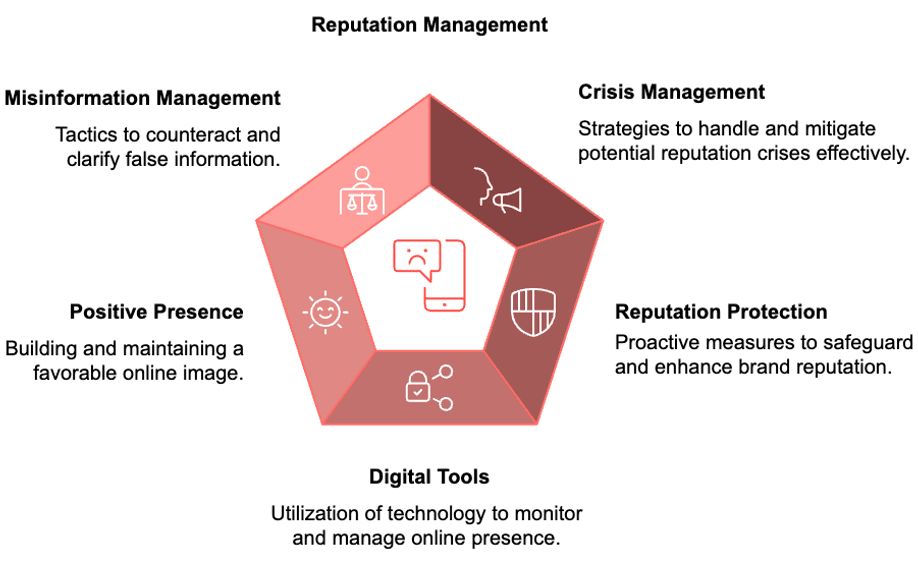
In conclusion, managing crises and protecting your reputation requires proactive planning, quick action, honesty, and ongoing efforts to improve. Implementing the strategies outlined in this chapter equips you to navigate the complexities of online reputation management, safeguard your brand during crises, and establish a strong, positive digital presence that resonates with your audience and drives your business goals.
BUILDING AND MAINTAINING YOUR BRAND LEGACY
Your brand is more than a logo or a catchy slogan. It represents the essence of your company’s identity, values, and reputation. Building and maintaining a strong brand legacy is essential for achieving long-term success. This chapter brings together key insights from earlier discussions and provides actionable strategies to establish a lasting and impactful brand presence.
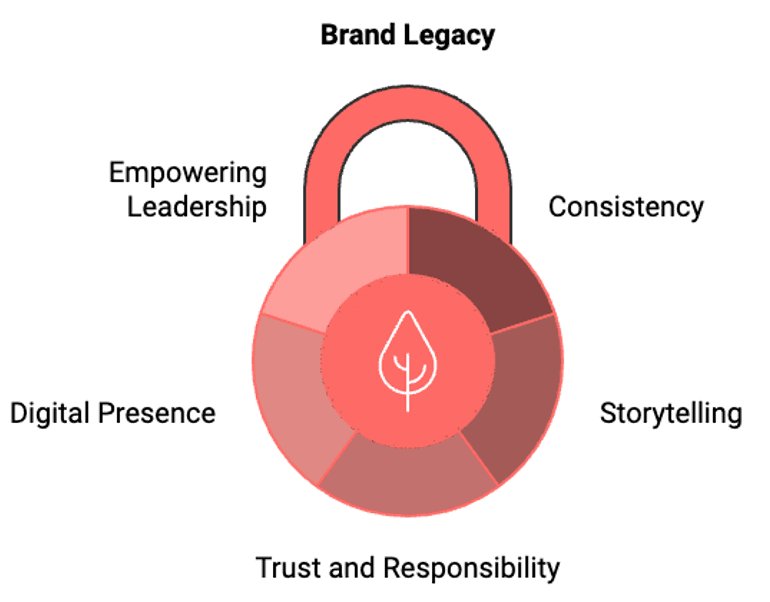
The Importance of a Strong Brand Legacy
A strong brand legacy is the foundation upon which successful businesses are built. It’s what sets you apart from competitors, fosters customer loyalty, and drives long-term growth. According to a 2023 study by Brand Finance, the world’s top 500 brands account for over $8 trillion in brand value. This staggering figure underscores the immense power of branding in today’s market.
Your brand legacy is the lasting impression you leave on your customers, employees, and the broader market. It’s what people think of when they hear your company’s name, and it’s what they tell others about their experiences with your products or services. A strong brand legacy can increase customer loyalty and retention, command premium pricing, attract top talent, facilitate easier expansion into new markets, and provide a buffer during economic downturns or PR crises.
Consistency is key to building a strong brand legacy. This doesn’t mean your brand should never evolve, but rather that your core values and brand promise should remain steadfast. Consistency builds trust, and trust is the foundation of a strong brand legacy. To maintain consistency across all touchpoints, develop a detailed brand guide that outlines your visual identity, tone of voice, and core messaging. Train all employees on your brand values and guidelines, regularly audit your brand presence across all platforms to ensure consistency, and use templates for common communications to maintain a consistent look and feel.
Consistency isn’t just about logos and colors. It’s about delivering a consistent customer experience across all interactions. Whether a customer is visiting your website, calling customer service, or interacting with your social media accounts, they should have a cohesive experience that aligns with your brand promise.
The Heart of Your Brand Legacy
Humans are wired for stories. We remember stories far more easily than we remember facts or figures. That’s why storytelling is such a powerful tool in building your brand legacy. Your brand story should communicate your values, your mission, and what makes you unique.
To craft a compelling brand story, start with your ‘why‘. What drove you to start your business? What problem were you trying to solve? Be authentic. Don’t try to be something you’re not. Customers can spot insincerity a mile away. Make your customers the heroes. Show how your product or service helps them overcome challenges or achieve their goals. Use emotion. The most memorable stories are those that make us feel something. Keep it simple. Your story should be easy to understand and repeat.
Once you’ve crafted your brand story, weave it into all aspects of your communication. Use it in your marketing materials, on your website, in your social media posts, and even in your product descriptions. While consistency is important, so is innovation. To build a lasting brand legacy, you need to stay relevant in a rapidly changing world. This doesn’t mean chasing every trend, but rather continuously improving and evolving to meet your customers’ changing needs.
To foster innovation, listen to your customers. They’re often the best source of ideas for new products or improvements. Encourage creativity within your team. Create an environment where new ideas are welcomed and explored. Stay informed about industry trends and technological advancements. Be willing to take calculated risks. Not every innovation will be a success, but without risk, there’s no reward. Remember, innovation doesn’t always mean creating something entirely new. Sometimes, it’s about finding new ways to deliver your existing products or services more effectively.
Fostering Trust and Responsibility
Trust is the foundation of any strong brand legacy. With challenges like misinformation and data breaches, establishing and preserving trust has become increasingly critical. According to the 2023 Edelman Trust Barometer, 81% of consumers say they need to be able to trust the brand to buy from it.
To build trust, be transparent. Be open about your practices, your pricing, and even your mistakes. Deliver on your promises. Consistently meeting or exceeding customer expectations is crucial. Prioritize customer privacy and data security. Respond promptly and honestly to customer feedback and concerns. Stand for something beyond profit. Today’s consumers want to support brands that align with their values. Trust is hard to gain and easy to lose. It requires constant effort and attention to maintain.
| Your brand legacy is not just about what you say, but what you do. |
Today’s consumers expect brands to do more than just sell products or services. They want brands to be socially responsible and to contribute positively to society. According to a 2023 study by Cone Communications, 86% of consumers are more likely to trust a company that supports social or environmental issues.
To embrace social responsibility, identify causes that align with your brand values and resonate with your target audience. Develop partnerships with reputable non-profit organizations. Implement sustainable business practices. Be transparent about your efforts and their impact. Encourage employee involvement in community service. Social responsibility should be genuine and integrated into your overall business strategy, not just a marketing ploy.
Leveraging Digital Platforms
Your online presence is a vital component of your brand legacy. Digital platforms provide unprecedented opportunities to reach and engage with your audience. To effectively leverage digital platforms, maintain an up-to-date, user-friendly website that reflects your brand identity. Use social media strategically to engage with your audience and share your brand story. Create valuable content that educates, entertains, or solves problems for your audience. Use data analytics to understand your audience and refine your digital strategy. Stay on top of emerging digital trends and platforms. Remember, your digital presence should be an extension of your overall brand identity, not a separate entity.
Building a brand legacy is not a one-time effort, but an ongoing process. It’s important to regularly measure your brand’s performance and make adjustments as needed. Key metrics to track include brand awareness, brand sentiment, customer loyalty, and brand value. Use tools like surveys, social media listening, and brand tracking studies to gather this data. Regularly review these metrics and use the insights to refine your brand strategy.
| Metric | Description | Measurement Tools |
| Brand Awareness | How many people know about your brand | Surveys, Social Media Analytics |
| Brand Sentiment | What do people think and feel about your brand | Social Media Listening, Customer Reviews |
| Customer Loyalty | How likely are customers to repurchase or recommend your brand | Net Promoter Score (NPS), Customer Retention Rate |
| Brand Value | How much financial value does your brand contribute to your business | Financial Analysis, Market Research |
Even the strongest brands can face crises. How you handle these situations can significantly impact your brand legacy. Having a crisis management plan in place is crucial. Your crisis management plan should include a designated crisis management team, pre-approved messaging templates for common crisis scenarios, a clear communication chain and approval process, guidelines for social media use during a crisis, and a plan for post-crisis evaluation and reputation repair. Remember, the key to effective crisis management is preparation, quick response, and transparent communication.
Empowering Brand Ambassadors and Leadership
Your employees are your most powerful brand ambassadors. They interact with customers, represent your brand in the community, and can significantly influence public perception of your company. To empower your employees as brand ambassadors, ensure all employees understand your brand values and mission. Provide training on how to represent the brand both online and offline. Encourage employees to share their experiences and insights on social media. Recognize and reward employees who exemplify your brand values. Create opportunities for employees to participate in brand-building activities. Remember, authentic employee advocacy can be far more powerful than traditional marketing efforts.
Leadership plays a crucial role in building and maintaining a strong brand legacy. Leaders set the tone for the entire organization and can significantly influence how the brand is perceived both internally and externally. To lead effectively in building your brand legacy, live your brand values. Your actions should consistently reflect what your brand stands for. Be visible. Engage with customers, employees, and the public in meaningful ways. Communicate your vision clearly and consistently. Foster a culture that aligns with your brand values. Be open to feedback and willing to make changes when necessary. Remember, as a leader, you are the face of your brand. Your personal brand and your company’s brand are inextricably linked.
Building and maintaining a strong brand legacy is a complex, ongoing process that requires dedication, consistency, and adaptability. It involves every aspect of your business, from your product development to your customer service to your social media presence. By focusing on authenticity, consistency, innovation, and social responsibility, you can create a brand that not only stands the test of time but also makes a positive impact on the world. Remember, your brand legacy is not just about what you say, but what you do. It’s about the experiences you create, the values you uphold, and the difference you make in people’s lives.
Keep these principles in mind as you continue to evolve and refine your brand strategy, ensuring it remains aligned with your goals and audience expectations. With persistence and dedication, you can build a brand legacy that resonates with your audience, stands out in the marketplace, and stands the test of time.
